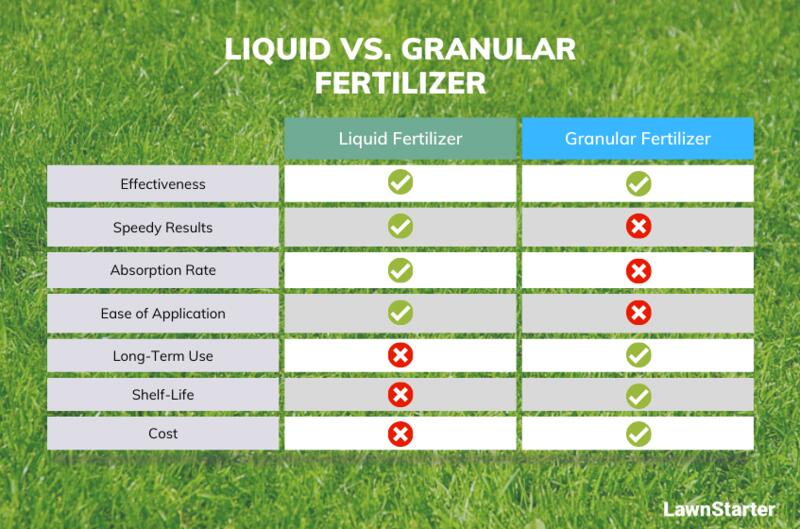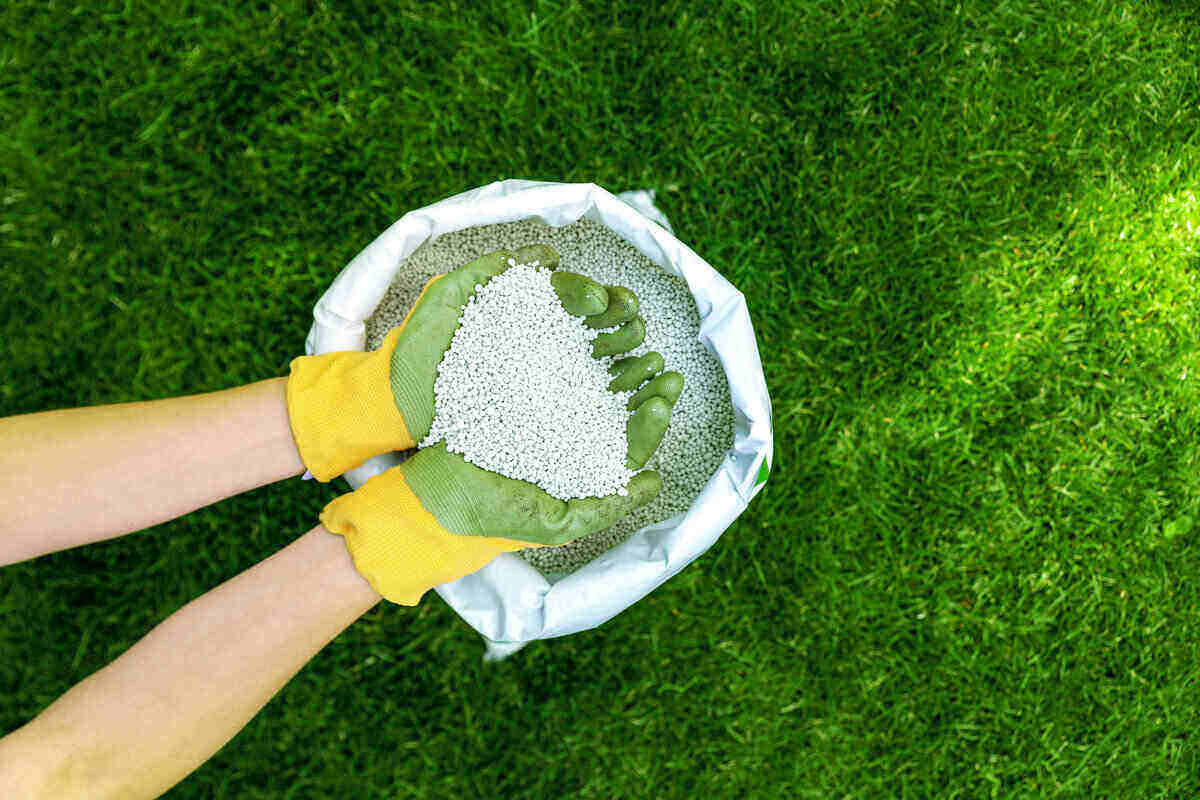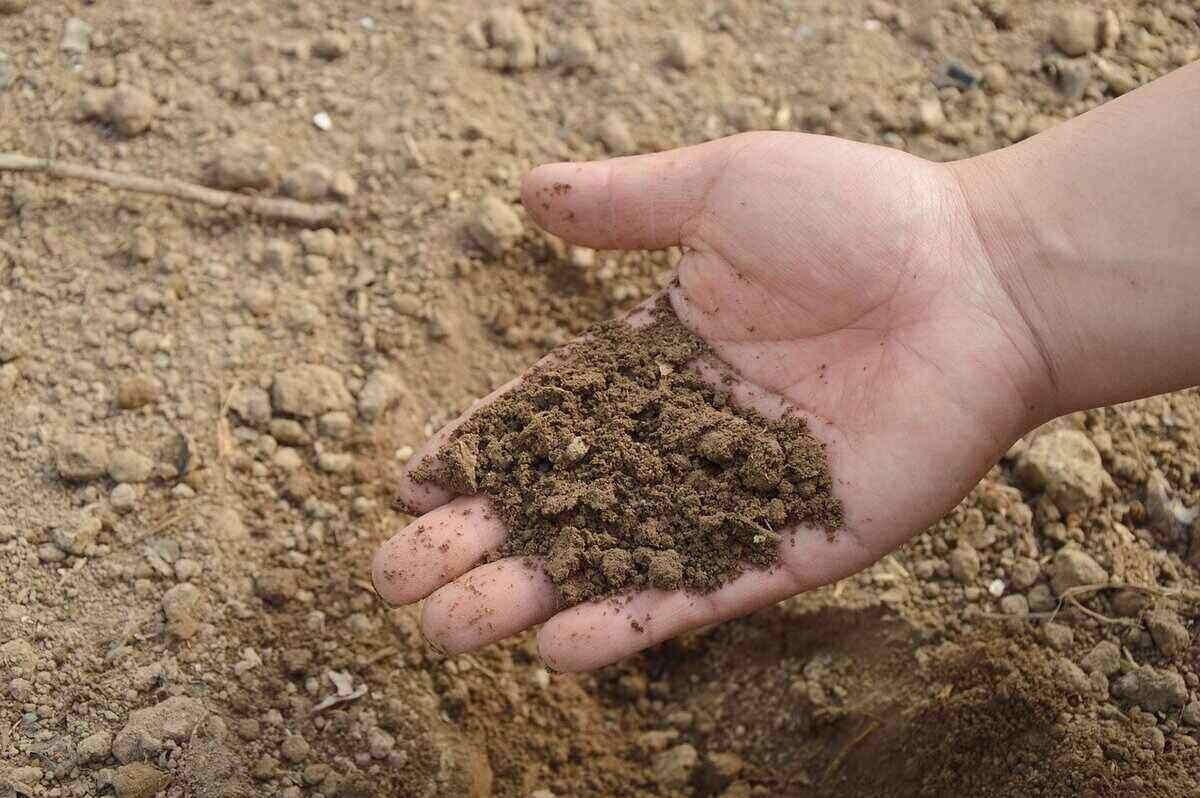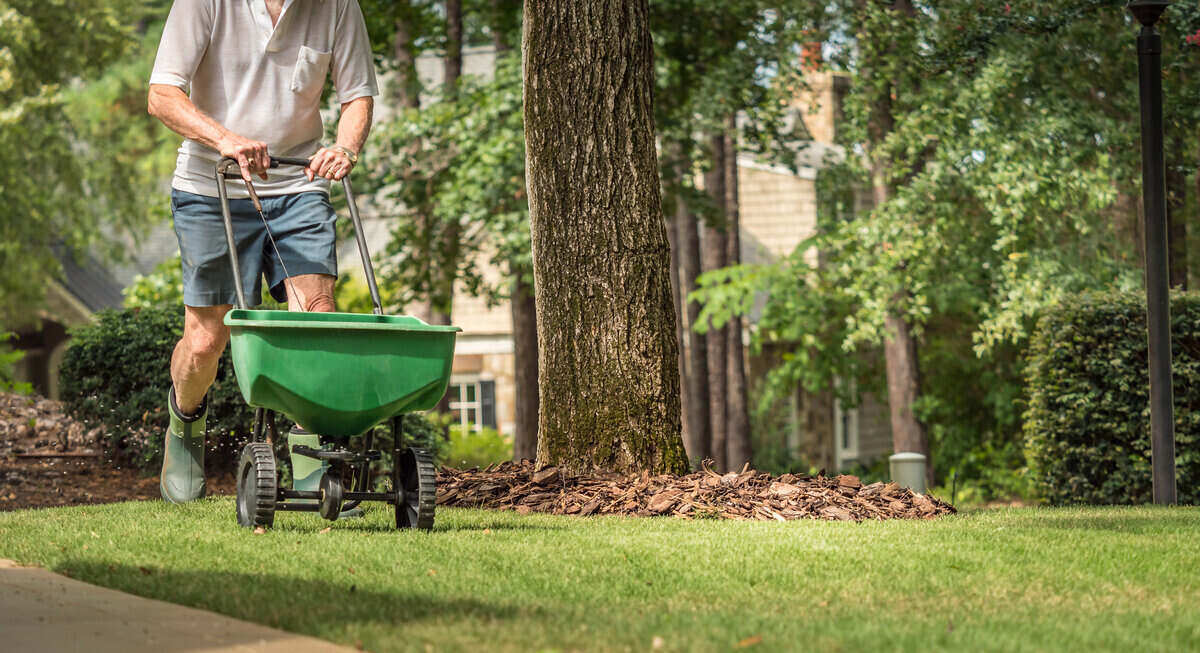
You know that feeling when you see your lawn, and it just looks sad? It probably needs fertilizing. Although plants can’t tell the difference between liquid and granular fertilizer, how do you know which one is right for your lawn and meets your needs?
This article covers the differences between liquid and granular fertilizers, how to apply them, and how to choose which is best for you and your turf.
What is Liquid Fertilizer?
Liquid fertilizers are liquid compounds that contain essential plant nutrients and are typically water-soluble. Homeowners can add liquid fertilizer to the soil or directly onto the plant foliage.
Liquid lawn fertilizers are quick-release and can be easily absorbed by the plant’s roots. They do not need to be broken down or converted into a solid form, making them the ideal starter fertilizer. But be careful not to overdue it–– this fast result can promote a growth surge, making the grass vulnerable to diseases.
Every drop of liquid fertilizer contains the same amount of nutrients, usually applied through irrigation systems or by attaching the bottle to a hose.
Tip: There are slow-release liquid fertilizers on the market that promise a slow release of nitrogen specifically. They have stabilizers, which allow them to have lower application rates (i.e., NitroGain Liquid Slow Release Fertilizer, Xtend).
Liquid Fertilizer Pros and Cons
Here are liquid fertilizer’s pros and cons:
| Liquid Fertilizer Pros | Liquid Fertilizer Cons |
| ✓ Can be applied to soil or foliage ✓ Easily absorbed ✓ Allows even distribution of nutrients ✓ Shows fast results ✓ Easy application process | ✘ Can trigger a growth surge ✘ May require frequent applications ✘ Has a shorter shelf-life than granular fertilizer ✘ Is typically more expensive than granular fertilizer |
But before we detail granular fertilizers, you can get liquid fertilizers (and other lawn care treatments) sent to your door. With a Sunday lawn care subscription program, you get fertilizers — custom-tailored to your yard’s needs based on a soil test.
Then all you have to do is connect the pouch to your garden house and spray the fertilizers on your lawn.
To learn more about Sunday, click the link below:

Now here’s what you need to know about granular fertilizers…
What is Granular Fertilizer?

Granular fertilizers also provide nutrients for plants, typically in the form of dry pellets. In addition, they are usually slow-release since the soil and plants have to break down each granule to receive the fertilizer nutrients.
Being slow-release means granular fertilizers can last for months and don’t have to be applied as often. However, that also means they don’t deliver nutrients fast enough when the lawn is in immediate need.
Dry fertilizers have a more significant spatial difference, meaning the distance between the nutrients and the plant roots is larger. For nutrients like phosphorus, this may hinder absorption. Moreover, each pellet contains a different nutrient, so the application may not be as consistent.
Here are granular fertilizer’s pros and cons:
| Granular Fertilizer Pros | Granular Fertilizer Cons |
| ✓ Provides nutrients for longer ✓ Doesn’t have to be applied often ✓ Longer shelf-life than liquid fertilizer ✓ Cheaper than liquid fertilizer | ✘ Difficult to apply evenly ✘ Doesn’t act fast enough for some lawns ✘ Contains a higher amount of salt than liquid fertilizer ✘ Some nutrients, like phosphorus, may have difficulty reaching the roots ✘ Requires more labor to apply than liquid fertilizer |
How to Apply Liquid Fertilizer

Most types of fertilizers in a liquid form are applied by attaching them to the end of your garden hose, but some may require you to use a special sprayer. Here’s a general guideline on how to apply liquid fertilizer:
- Calculate your lawn’s square footage.
- Calculate how much fertilizer you need. The rule of thumb is 1 pound of nitrogen per 1,000 square feet, but it’s always a smart idea to conduct a soil test.
- Water your lawn so it’s damp but not soaking wet.
- Read the instructions on the product label.
- Attach the fertilizer bottle to the end of your garden hose.
- Apply the liquid fertilizer at an even rate over your entire lawn area.
- Don’t walk on the lawn or let pets or children play on it until the fertilizer has had a chance to soak in and dry up.
How to Apply Granular Fertilizer
The best way to apply granular fertilizer to your lawn is with a spreader (not by hand!). There are many different types of spreaders, including hand-held ones that you can crank while walking around your yard. Here are the different types of spreaders:
- Drop spreader
- Broadcast spreader (or rotary spreader)
- Hand-held spreader
The type of spreader you use will determine how much fertilizer you can apply at once. Still, all spreaders allow you to apply fertilizer relatively evenly across the desired area.
When using a hand-held spreader, it’s essential to stroll steadily. When you’re using a larger machine, ensure it has been appropriately calibrated so that the wheels don’t spin too fast or too slow. That could cause uneven coverage.
How to Choose Between Liquid and Granular Fertilizer
Choosing between liquid and granular fertilizers can be a challenging task for homeowners. Still, it is a matter of understanding how each type works and how they can achieve the desired result. There isn’t a better fertilizer than the other; it just depends on your needs.
Here’s a comparison table to help you make the decision:

FAQ About Liquid and Granular Fertilizers
The simple answer is yes. Fertilizing too much can burn your grass, leaving yellow and brown streaks on your lawn. That happens because the fertilizer raises the nitrogen and salt in the soil to toxic levels. Balance is the rule you should follow when applying your fertilizer.
Give preference to applying fertilizers, especially liquid fertilizers, in the fall for cool-season grasses and late spring for warm-season grasses.
Granular fertilizers can last up to five months on the lawn. In contrast, liquid fertilizers only last for about two weeks before they need to be reapplied.
The numbers on the fertilizer bag refer to the three main components of fertilizer, NPK:
• Nitrogen (N),
• Phosphorous (P)
• Potassium (K)
The numbers represent the ratio in which each of these three elements is present in the bag. So, for example, the numbers 10-18-10 indicate that there’s 10% nitrogen, 18% phosphorous, and 10% potassium.
Both liquid and granular fertilizers supply these essential nutrients. Each one of these elements serves different purposes, and the ideal ratio will depend on what you need the fertilizer for. Results from a laboratory soil test will often provide the ideal NPK ratio for your lawn.
Call a Professional
So, which fertilizer will you choose? With a wide selection of granular and liquid options available, you might have to consider your options carefully.
You’ll want to decide which fertilizer works for your needs and what is most affordable for your turf goals. Thankfully, a local lawn care pro can help you with those choices.
Main Image Credit: Pexels




